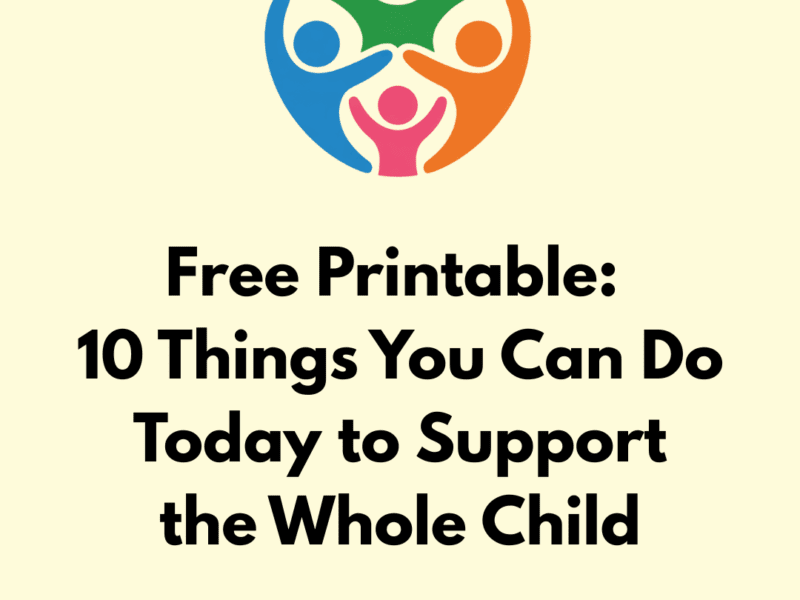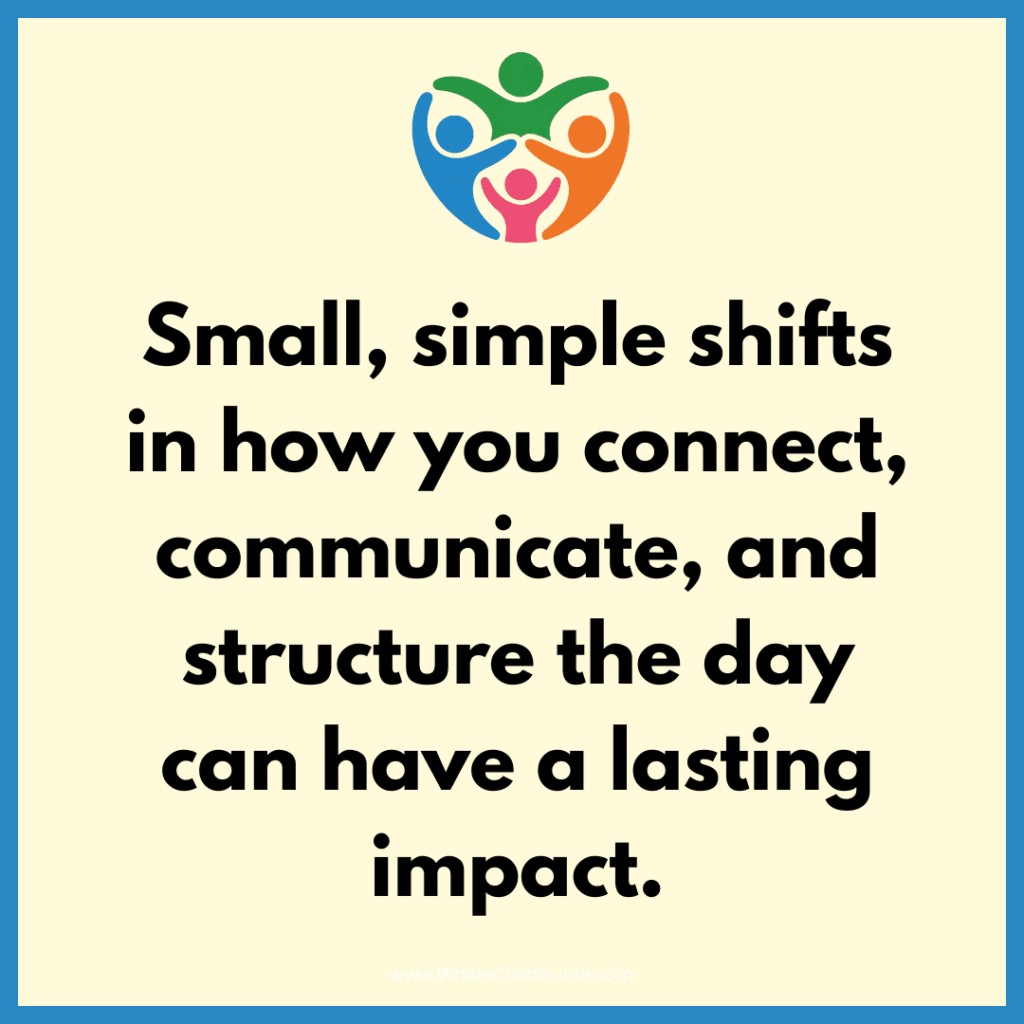
When you’re worried about your child’s development, whether it’s speech delays, motor coordination, or emotional challenges, it can feel overwhelming to know what to do next. While you’re waiting for evaluations or services, there are simple, meaningful actions you can take right away to support your child’s growth. Here are three strategies pulled directly from our free printable cheat sheet, 10 Things You Can Do Today to Support the Whole Child. These ideas are designed for everyday use and are easy to try at home. You can download the FREE printable cheat sheet at the bottom of this post.
What Does It Mean to Support the Whole Child?
Supporting the whole child means looking beyond one area of development and focusing on the full picture, including communication, motor skills, social-emotional growth, behavior, and sensory needs. Every child is unique, and their development is interconnected. Helping a child regulate their emotions, for example, can also improve their focus or ability to learn.
When you support the whole child, you’re not just reacting to challenges. You’re creating a strong foundation that helps your child succeed at school, at home, and in life.

Parents Play the Most Important Role
As a parent, you may feel unsure or even powerless while waiting for answers or support. That’s completely understandable. Parenting is hard work, and it can be even harder when your child is struggling in ways that are difficult to understand.
But here’s something important to remember. You are the most powerful influence in your child’s life. Your daily interactions, routines, and support matter more than you think. The good news is that you don’t have to make big changes overnight. Small, simple shifts in how you connect, communicate, and structure the day can have a lasting impact.

1. Build Predictable Routines
Children are more likely to succeed when they feel safe and know what to expect. A consistent routine helps reduce anxiety and creates structure throughout the day, especially during transitions like mornings, mealtimes, or bedtime.
Try this: Create a simple three-step bedtime routine. For example, brush teeth, read one book, and turn on a sound machine. Use the same steps every night. Over time, this familiarity helps your child settle more easily and feel more secure.
2. Use Clear and Kind Language
The way you communicate with your child matters. Short, calm sentences are easier to understand, and giving your child a moment to respond shows respect. Clear language helps reduce confusion and encourages cooperation.
Try this: Instead of saying, “Clean up right now,” try saying, “It’s time to clean up. I’ll help you start with the blocks.” Then pause for a few seconds. That short wait gives your child time to process and respond on their own.
3. Practice Coregulation
When a child is overwhelmed, they often need help managing big emotions. Coregulation means staying calm and present so your child can borrow your sense of safety and begin to calm down too. This teaches important emotional skills over time.
Try this: Sit quietly next to your child during a meltdown. Lower your voice and take three slow breaths. Say, “I’m here. Let’s take a breath together.” Your calm presence can help your child begin to feel more in control.
Want All 10 Ideas in One Easy Printable?
These three tips are part of our free resource, 10 Things You Can Do Today to Support the Whole Child. This printable cheat sheet is designed for parents of children of all abilities. It gives you clear, practical ways to support your child’s development, even while you’re waiting for outside help.

